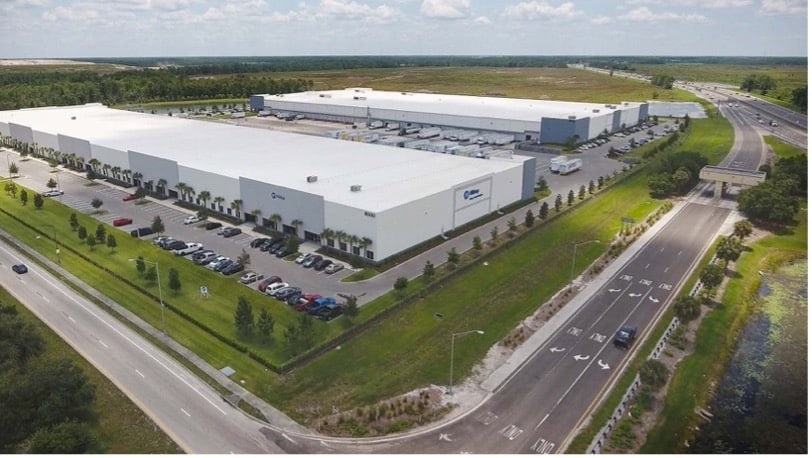Smart Growth: How Logistics Teams Can Scale Operations Without Sacrificing Service
With rising transportation costs, shrinking margins, and growing customer expectations, it’s no longer enough to simply grow—teams need to grow strategically. This … Continued

With rising transportation costs, shrinking margins, and growing customer expectations, it’s no longer enough to simply grow—teams need to grow strategically.
This article explores how logistics leaders can expand operations intentionally, with practical strategies for improving infrastructure, workforce planning, and last-mile performance while keeping service levels high and costs in check.
Shift to Flexible Delivery Infrastructure
Traditional delivery models often depend on fixed warehouses and rigid routing structures. While this offers predictability, it lacks the adaptability that today’s dynamic logistics environment requires.
Flexible infrastructure—such as regional hubs, scalable warehousing, and route optimization tools—makes it possible to scale up or down based on demand. Approaches like cross-docking and shared-space warehousing reduce the need for long-term capital commitments while maintaining responsiveness.
Key takeaway: Building flexibility into both infrastructure and fleet allows businesses to scale efficiently while reducing fixed costs.
Partner Strategically for Final Mile Success
Final mile delivery is often the most resource-intensive stage of the supply chain, especially for high-touch, bulky, or specialized items. While national carriers offer broad coverage, regional logistics providers can offer faster response times, more flexibility, and deeper familiarity with local delivery challenges.
That local knowledge—of traffic patterns, neighborhoods, and site requirements—often translates to more accurate and timely deliveries, particularly in dense or difficult-to-navigate markets. The result: fewer delays, fewer missed appointments, and a better end-customer experience.
Key advantages of partnering with asset-based regional providers include:
- Direct communication and quicker decision-making
- Greater adaptability to market-specific delivery windows
- Personalized service that enhances customer satisfaction
Key takeaway: Regional delivery partners can complement national networks with agility and service tailored to specific market needs.
Customize Delivery Models to Match Product and Customer Needs
Not every product—or customer—requires the same delivery approach. By segmenting delivery models based on value, urgency, and service requirements, organizations can drive both efficiency and customer satisfaction.
Examples include:
- Leveraging blended delivery networks for non-urgent, lower-margin shipments
- Using dedicated fleets for consistent, high-volume lanes
- Reserving white-glove or installation services for premium or delicate items—such as furniture, appliances, fixtures, and hospitality FF&E that require in-room placement, unpacking, setup, and debris removal
Key takeaway: Matching delivery strategies to the needs of each segment minimizes waste and increases return on investment.
Invest in Scalable Operations and Culture
Technology and assets are essential, but people and processes are what ultimately make a network scalable. Agile, cross-trained teams with a strong service mindset can adjust to shifting volumes, new territories, or changing customer expectations.
For example, Hilldrup’s Orlando operation has refined its staffing, training, and team coordination to accommodate a wide variety of client timelines and delivery requirements. While not all projects require extended schedules, the operation’s internal flexibility has proven essential for adapting to peak periods and weekend needs when required.
Key takeaway: Operational agility comes from empowering teams, fostering collaboration, and aligning processes with the realities of today’s delivery landscape.
Driving Growth Through Strategic Efficiency
Scaling a delivery network doesn’t mean stretching resources thin. It means designing a model that adapts to demand, maximizes existing assets, and maintains service quality through smart decisions and strong partnerships.
Final Thoughts
In today’s logistics landscape, growth can’t come at the expense of efficiency or service. For supply chain and operations leaders, smart growth means building systems that are agile, cost-effective, and capable of delivering consistently, no matter the scale.
By investing in flexible infrastructure, forming the right partnerships, and aligning delivery strategies to customer needs, logistics teams can expand with purpose—and without overextending resources.
Scalable doesn’t have to mean stretched. With the right approach, growth can be both sustainable and smart.
Interested in scaling your delivery operations with confidence?
Let’s connect to explore how a tailored logistics strategy can help you meet demand—without sacrificing performance.


